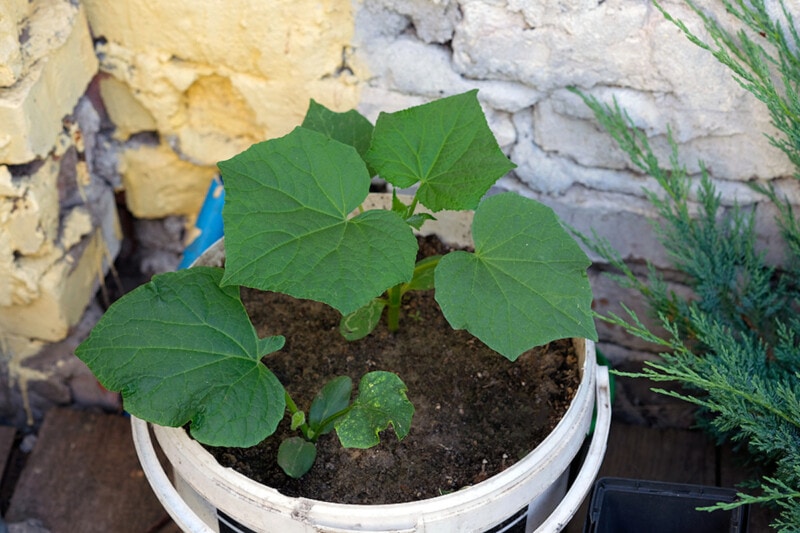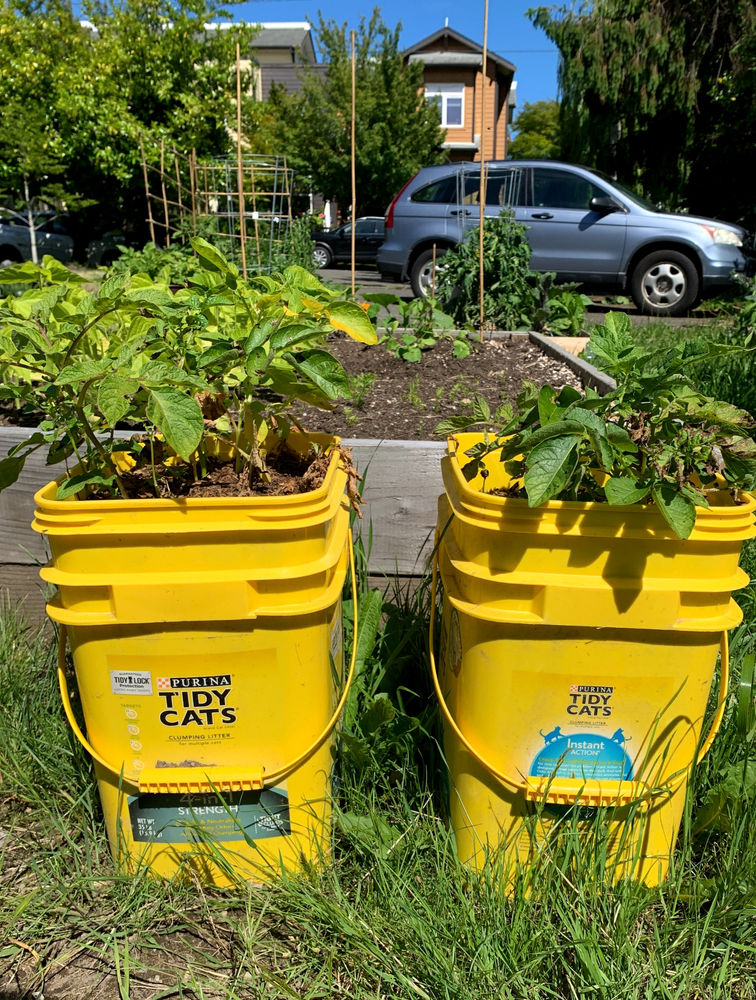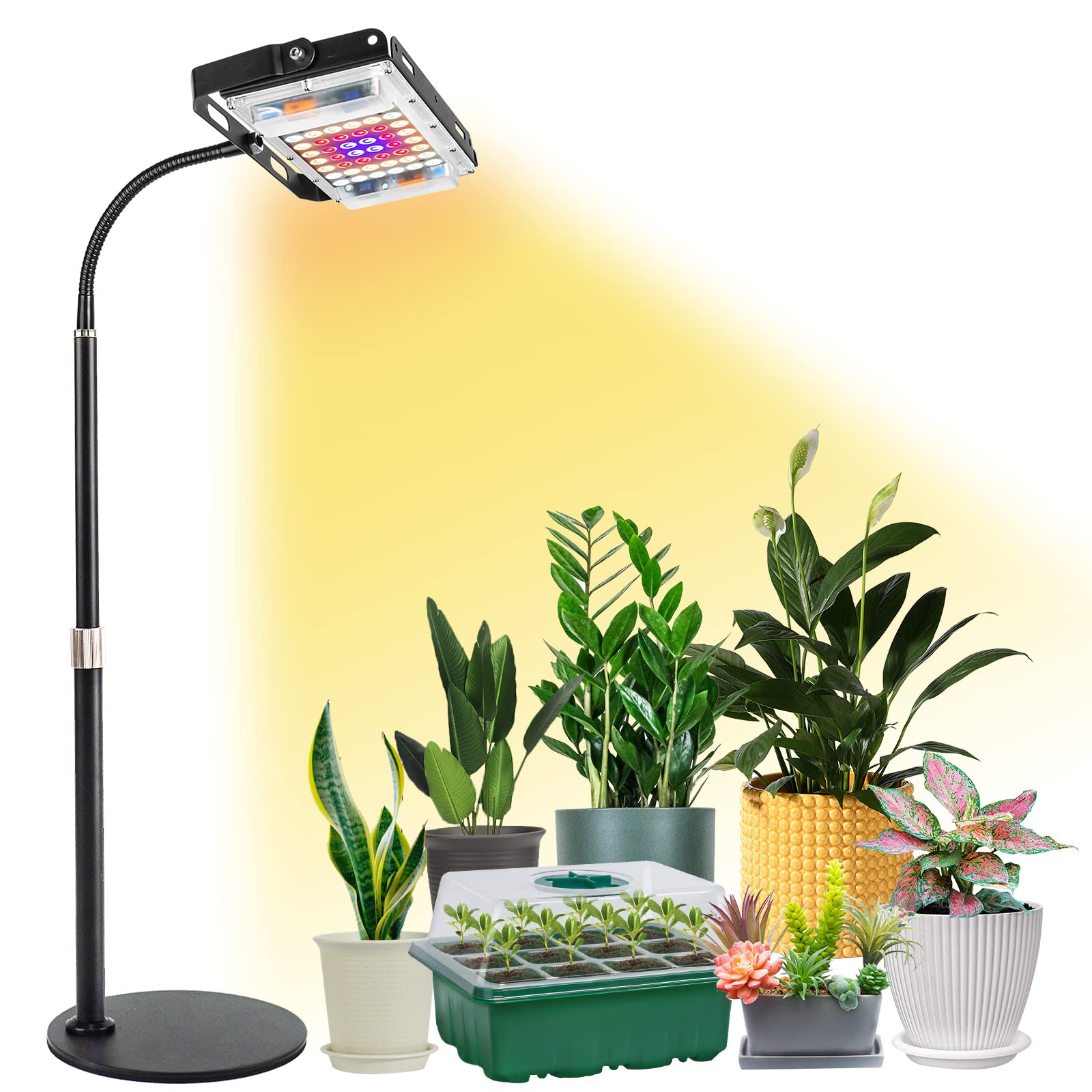Growing cucumbers in a pot is easy and requires proper care and maintenance. A great way to enjoy fresh cucumbers, even if you have limited space, is by growing them in a pot.
Cucumbers are a popular vegetable that can thrive in containers, allowing you to grow them on a balcony, patio, or even indoors. This method offers several advantages, such as better control over soil quality, protection from pests, and easy access for watering and harvesting.
With the right potting mix, sufficient sunlight, regular watering, and proper support, you can grow healthy cucumbers in a pot. We will provide you with valuable tips and guidelines on successfully growing cucumbers in a pot, ensuring a plentiful harvest of these delicious and nutritious vegetables.
Choosing The Right Pot
Growing cucumbers in pots is a fantastic way to enjoy this refreshing vegetable even if you have limited space. But before you start planting, it is essential to choose the right pot for your cucumbers. Here, we’ll dive into the key factors to consider when selecting the perfect pot for your cucumber plants.
Size And Depth
The size and depth of the pot are crucial for the optimum growth of your cucumber plants. They have sprawling vines, so it’s important to provide enough space for the roots to spread out and for the plant to grow vertically. A pot with a capacity of at least five gallons is recommended to accommodate the size of the cucumber plant and its root system. This size ensures that the plant has enough room to flourish without being cramped.
Drainage
Proper drainage is key when it comes to growing cucumbers in pots. Cucumbers thrive in moist soil, but they do not like sitting in waterlogged conditions. Ensure that the pot you choose has drainage holes at the bottom to allow excess water to escape. This prevents water from accumulating and causing root rot, which can be detrimental to the health of your cucumber plant. Additionally, placing a layer of gravel or small rocks at the base of the pot helps improve drainage.
Material
The material of the pot plays a significant role in the overall growth and health of your cucumber plants. While various materials are available, clay or terracotta pots are highly recommended. These materials are porous, allowing for proper airflow and moisture control. The porous nature of clay pots helps prevent waterlogged soil while allowing excess moisture to evaporate. This aids in maintaining the ideal moisture levels for your cucumber plants.
Furthermore, clay pots have the added benefit of providing insulation, which keeps the soil temperature cooler during hot summer days. This is particularly beneficial for cucumber plants, as they prefer cooler temperatures. Alternatively, if you choose a plastic container, make sure it is BPA-free and has sufficient drainage holes to prevent water from accumulating.

Credit: savvygardening.com
Selecting The Right Cucumber Variety
Growing cucumbers in a pot is a great way to enjoy a bountiful harvest, even in limited space. Selecting the right cucumber variety is the first crucial step towards a successful container cucumber garden. With various options available, it’s important to consider factors such as determinate or indeterminate growth, disease resistance, and space requirements when choosing the ideal cucumber variety for your container garden.
Determinate Or Indeterminate
When selecting a cucumber variety for pot cultivation, it is essential to understand whether it is determinate or indeterminate. Determinate cucumber plants are more compact in size and are suitable for confined spaces. They produce a set number of fruits and have a bush-like growth habit, making them ideal for container gardening. In contrast, indeterminate varieties are characterized by vining growth and a continual harvest throughout the growing season. While both types can be grown in a pot, determinate cucumbers are often preferred for their manageable size.
Disease Resistance
Opting for cucumber varieties that show resistance to common diseases can significantly improve the success of your container garden. Look for variants that are resistant to common ailments such as powdery mildew, cucumber mosaic virus, and downy mildew. Prioritizing disease-resistant varieties can help thwart potential issues and ensure a healthy, thriving cucumber crop in your pot.
Space Requirements
Considering the space available in your pot is important when choosing a cucumber variety. Bush-type cucumber varieties are excellent for smaller containers as they have a compact growth habit. Vining varieties, although they require more vertical space, can be trained to grow vertically using supports. To maximize the use of space, consider the compact bush varieties that are well-suited for pots with limited room for sprawling growth.
Preparing The Potting Mix
Preparing the Potting Mix is an essential step in successfully growing cucumbers in a pot. The potting mix should provide the right combination of nutrients, moisture retention, and drainage for optimal cucumber growth. In this article, we will discuss the key factors to consider when preparing the potting mix for your cucumber plants.
Soil Composition
The soil composition for growing cucumbers in a pot should be light, well-draining, and nutrient-rich. A suitable potting mix can consist of a combination of garden soil, peat moss, and perlite in equal proportions. Garden soil contains essential minerals, while peat moss enhances water retention, and perlite improves drainage. This balanced soil composition creates an ideal growing environment for your cucumber plants.
Adding Compost Or Organic Matter
Incorporating compost or organic matter into the potting mix provides additional nutrients and improves the overall soil structure. Compost is a rich source of organic matter that enriches the soil and promotes healthy cucumber growth. You can easily make compost at home using kitchen scraps and yard waste. Simply mix it into the potting mix to enhance its fertility and ensure robust cucumber plants.
Balancing Ph Levels
The pH level of the potting mix is crucial for cucumber plants to absorb nutrients effectively. Ideally, the pH should range between 6 and 7, slightly acidic to neutral. You can test the pH level using a pH testing kit available at your local garden center. If the pH is too acidic, you can add agricultural lime to raise it, and if it’s too alkaline, sulfur can be added to lower it. Balancing the pH level ensures your cucumber plants can access all the necessary nutrients for healthy growth.

Credit: cleangreensimple.com
Planting And Caring For Cucumber Plants
When it comes to growing cucumbers in a pot, proper planting and caring techniques play a crucial role in ensuring a bountiful harvest. Whether you choose to start from seeds or opt for seedlings, providing adequate water, fertilizing regularly, and offering support to the plants are all essential steps to help your cucumber plants thrive. In this section, we will explore each of these aspects in detail.
Planting Seeds Or Seedlings
If you’re starting from seeds, sow them directly into the pot, around one inch deep, and ensure they are spaced apart to allow for proper growth. Cover the seeds with soil and gently pat it down.
If you prefer seedlings, prepare the pot by filling it with a well-draining potting mix. Dig a hole large enough to accommodate the root ball of the seedling. Place the seedling into the hole, making sure it is at the same depth as it was in its original container. Fill the hole with soil and gently firm it around the seedling.
Watering
Proper watering is vital for cucumber plants, especially during hot summer months. Aim to keep the soil consistently moist but not soggy. To avoid overwatering, check the soil’s moisture level by inserting your finger about an inch deep. If it feels dry, it’s time to water the plants.
Remember that cucumber plants have shallow roots, so it’s essential to water them at their base, near the soil, rather than overhead. This will help prevent diseases and promote healthy growth. Consider using a drip irrigation system or a watering can with a gentle spout for precise and efficient watering.
Fertilizing
Like most plants, cucumbers benefit from regular fertilization to ensure they have the necessary nutrients for growth and fruit production. Start by incorporating a slow-release balanced fertilizer into the potting mix when planting. This will provide a steady supply of nutrients over time.
As the cucumber plants grow, supplement their nutrient intake with a water-soluble fertilizer every two to three weeks. Dilute the fertilizer according to the package instructions and apply it directly to the soil, avoiding contact with the leaves or stems.
Supporting The Plants
Cucumber plants are known for their vining habit, and providing proper support is crucial to avoid tangled growth and maximize space. Consider using a trellis, bamboo stakes, or a wire cage to keep your cucumber plants neatly supported.
When the plants begin to vine, gently guide them towards the support structure, securing the vines with soft plant ties or twine. This will encourage vertical growth and prevent the cucumbers from weighing down the plant and potentially causing breakage.
Regularly check the ties and adjust them as necessary to accommodate the growth of the plants. Pay attention to any signs of stress or overcrowding and ensure adequate airflow between the leaves for disease prevention.
Harvesting And Maintaining Cucumber Plants
Growing cucumbers in a pot can be a rewarding and space-saving way to enjoy the fresh, crisp taste of homegrown cucumbers. To ensure a successful harvest, it’s important to understand how to properly maintain and care for your cucumber plants. In this section, we’ll delve into the key aspects of harvesting and maintaining cucumber plants, including when to harvest, preventing pests and diseases, and pruning and training techniques for maximizing your yield.
Identifying When To Harvest
Knowing when to harvest your cucumbers is crucial for ensuring optimal flavor and texture. Cucumbers are ready to harvest when they reach the appropriate size and color. Typically, they are best picked when they are firm, green, and reach a length of 6 to 8 inches. To identify a ripe cucumber, gently feel the fruit – it should be firm and the skin should be a vibrant shade of green. Harvesting cucumbers regularly encourages the plant to produce more fruit, so be sure to keep a close eye on their development.
Preventing Pests And Diseases
Maintaining the health of your cucumber plants involves keeping a watchful eye for both pests and diseases. Common pests that can affect cucumber plants include aphids, spider mites, and cucumber beetles. To deter pests, consider using natural remedies like neem oil or insecticidal soap. Additionally, maintaining proper air circulation around the plants can help prevent diseases like powdery mildew. Regularly inspect your plants for signs of infestation or disease and take proactive measures to mitigate any issues.
Pruning And Training
Pruning and training your cucumber plants can help optimize their growth and fruit production. Trimming away excess foliage can improve air circulation and sunlight exposure, which can reduce the risk of disease and promote healthier growth. As the plants grow, gently guide the vines along a trellis or support structure to encourage upward growth and reduce crowding. Training the vines will also make it easier to spot and harvest ripe cucumbers. Regularly monitor the vines and adjust their placement as needed to ensure they are growing in an optimal direction.

Credit: m.youtube.com
Conclusion
Growing cucumbers in a pot is a rewarding and simple way to enjoy fresh produce at home. With the right care and attention, anyone can successfully cultivate cucumbers in a pot. By following the tips and techniques outlined in this guide, you can look forward to a bountiful cucumber harvest right on your doorstep.
Happy gardening!









